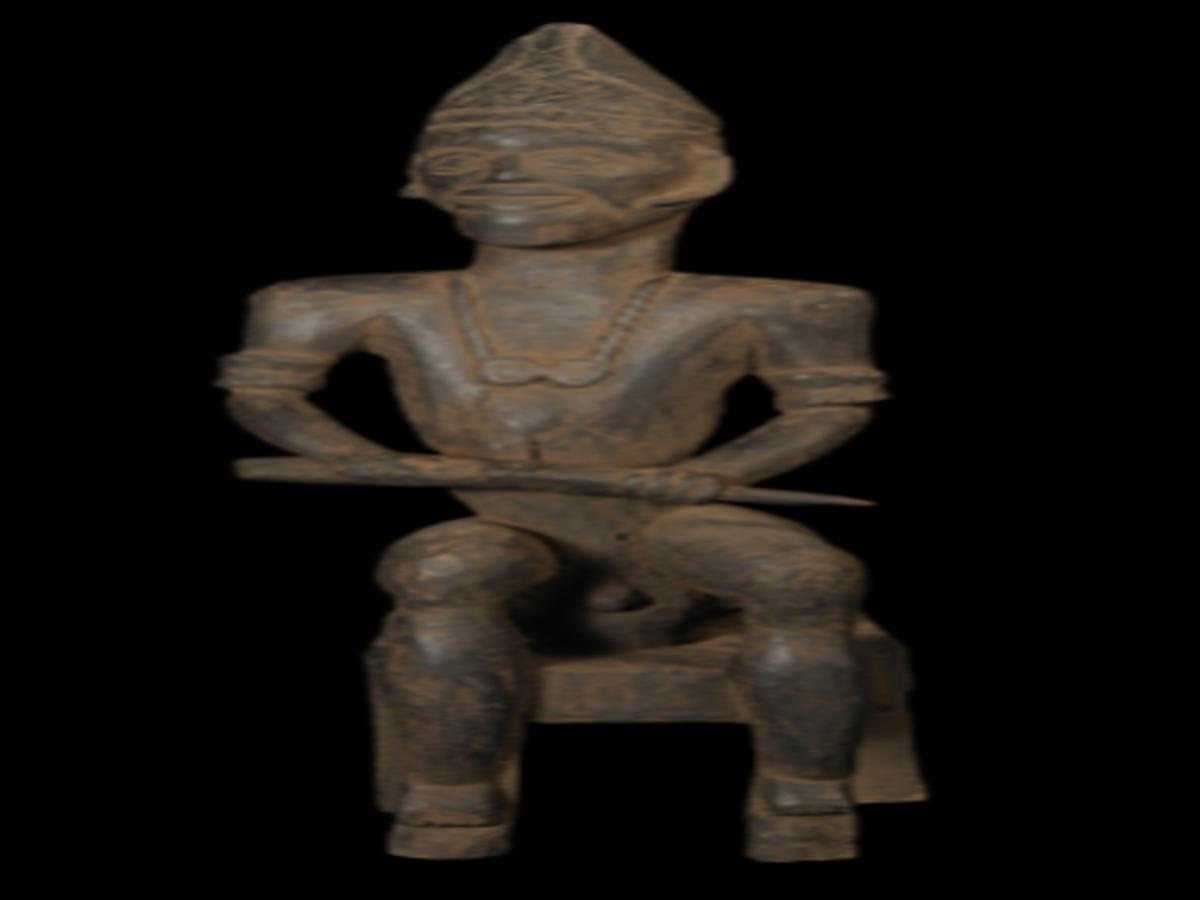State
Tribe Name
Art Type
short description
The Chang Naga tribe, which is one of the major Naga tribes residing in the Tuensang district of Nagaland, India, has considerable significance regarding the statue. The Naga tribes have historical pride in wood carving and symbolic sculptures dedicated to their great personalities, warriors, and ancestors. Being a wooden depiction of courage, honor, and the spirit of the warrior, it represents the Chang Naga culture respected and applied through this statue. The statue represents a male figure sitting on a very ancient wooden chair carved out of a single piece of wood, showing the very fine expertise of traditional woodworking by the artisan. This man has been put on a square-cornered platform, signifying stability and strength, with a gun in both hands mass that of a protector or a warrior, with ornate headgear on his head claiming unrivaled importance; the adornment is a symbol of high social rank, war accomplishments, or special ceremonies in Naga culture
Thumbnail

Filter Postion
Left
Filter Background
Off
Theme
Filter Header Image

content
Image

description
The Chang Naga tribe, which is one of the major Naga tribes residing in the Tuensang district of Nagaland, India, has considerable significance regarding the statue. The Naga tribes have historical pride in wood carving and symbolic sculptures dedicated to their great personalities, warriors, and ancestors. Being a wooden depiction of courage, honor, and the spirit of the warrior, it represents the Chang Naga culture respected and applied through this statue. The statue represents a male figure sitting on a very ancient wooden chair carved out of a single piece of wood, showing the very fine expertise of traditional woodworking by the artisan. This man has been put on a square-cornered platform, signifying stability and strength, with a gun in both hands mass that of a protector or a warrior, with ornate headgear on his head claiming unrivaled importance; the adornment is a symbol of high social rank, war accomplishments, or special ceremonies in Naga culture.
The ornament is made to illustrate the traditional ornaments of beads, boar tusks, or metal around the neck of the warrior, all symbols of status and valour among the Chang Nagas. The carved necklace would thus mean the traditional accoutrements of the warrior, bore juxtapositions, or melted - all representatives of honour in the Chang Naga community. However, the statue is static; it signifies a certain kind of movement. It brings forth ideas of alertness and pride emerging from the deep-rooted love of the tribe for its hero ancestor. Such statues are more than mere decorations; they are historical records and sacred objects found in morungs (bachelor dormitories), village gates, or ancestral homes. It is thus one of the examples preserved in the Indian Museum, Kolkata, in commemoration of the tradition and creativity of the Chang Naga tribe.
The ornament is made to illustrate the traditional ornaments of beads, boar tusks, or metal around the neck of the warrior, all symbols of status and valour among the Chang Nagas. The carved necklace would thus mean the traditional accoutrements of the warrior, bore juxtapositions, or melted - all representatives of honour in the Chang Naga community. However, the statue is static; it signifies a certain kind of movement. It brings forth ideas of alertness and pride emerging from the deep-rooted love of the tribe for its hero ancestor. Such statues are more than mere decorations; they are historical records and sacred objects found in morungs (bachelor dormitories), village gates, or ancestral homes. It is thus one of the examples preserved in the Indian Museum, Kolkata, in commemoration of the tradition and creativity of the Chang Naga tribe.
Image Mode
landscape
promoted
On
Verified
Off
